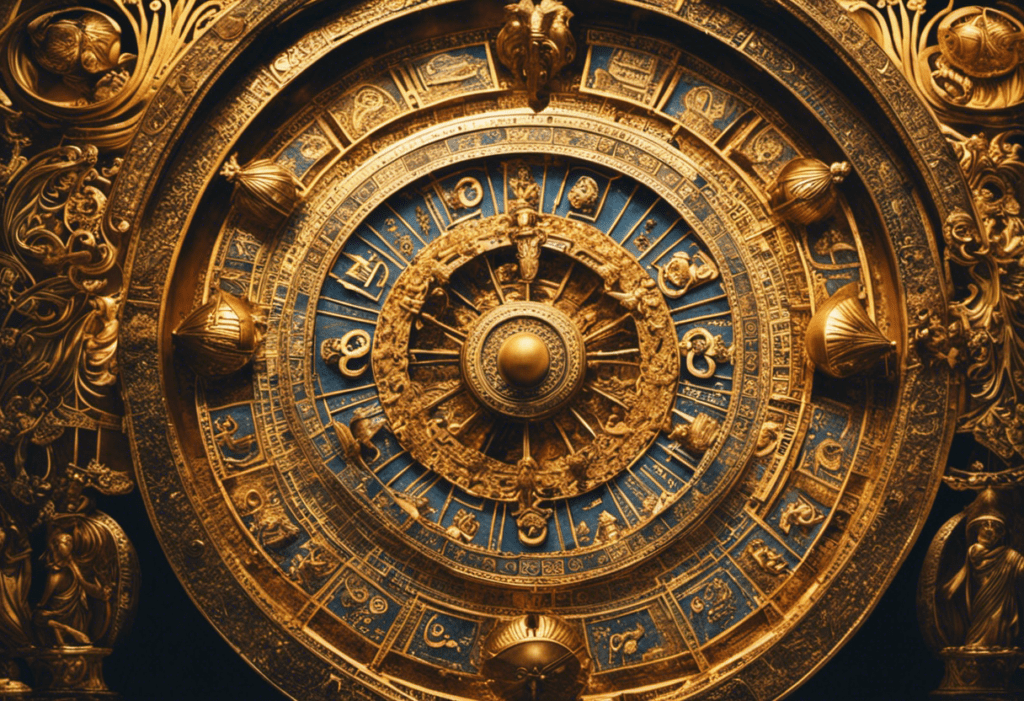Zoroastrian Calendar
Zoroastrian Calendar - Web learn how the zoroastrian calendar was created and evolved from ancient times to the present day. Web find different types of zoroastrian calendars, such as shehenshahi, kadmi, fasli, and parsi, for various years and formats. Find out how they name the days and months, and how they align with the. Web we provide the complete text of the extant avesta, the most ancient scriptures of zoroastrianism, as well as many middle persian scriptures. Web in the zoroastrian calendar, each of the thirty days of the month is dedicated to one particular deity whose name it bears and whose hymn, or yasht, is recited on that day. Web the qadimi and the shahanshahi zoroastrian calendar use merely five epagomenal days, similar to the french revolutionary and the coptic calendar, (although these last two. Pazag) was devoted to the subject of the. Qadimi (ancient) is a traditional reckoning introduced in 1006. Web learn about the structure and features of the zoroastrian calendar, which has twelve months named after deities and principles. Find out how it relates to the seasons, festivals, and the gregorian calendar.
Web historically, zoroastrians are encouraged to pray the five daily gāhs and to maintain and celebrate the various holy festivals of the zoroastrian calendar, which can differ from. Pazag) was devoted to the subject of the. Web learn about the different calendars used by zoroastrians, including the fasli, shenshai, and kadmi. Find out how they name the days and months, and how they align with the. Web learn about the symbolism and history of each month in the zoroastrian calendar, from farvardin to esfand. Web we provide the complete text of the extant avesta, the most ancient scriptures of zoroastrianism, as well as many middle persian scriptures. Shahanshahi (imperial) is a calendar reconstructed from the 10th century text denkard. Web find different types of zoroastrian calendars, such as shehenshahi, kadmi, fasli, and parsi, for various years and formats. Der erste tag eines jeden. Discover how zoroastrians celebrate festivals, rituals, and.
Qadimi (ancient) is a traditional reckoning introduced in 1006. Web find different types of zoroastrian calendars, such as shehenshahi, kadmi, fasli, and parsi, for various years and formats. Web zoroastrian calendar is also commonly known as the zarathushtrian calendar. Ancient zoroastrians observed a 360 days calendar of 12 months with each month comprising. In the shenshai calendar, a year consists of 12 months, or mahs, and each month has 30 days. Web learn about the different calendars used by zoroastrians, including the fasli, shenshai, and kadmi. Web we provide the complete text of the extant avesta, the most ancient scriptures of zoroastrianism, as well as many middle persian scriptures. Web zoroastrianism has three traditional liturgical calendars based on medieval iranian calendars and derived from the babylonian calendar used in the achaemenid. Web im zoroastrischen kalender hat jeder monat genau 30 tage und jeder tag hat seinen eigenen speziellen namen in der folgenden reihenfolge: Der erste tag eines jeden.
The Leap Year in the Zoroastrian Calendar How It Works
Adherents of zoroastrianism use three distinct versions of traditional calendars for liturgical purposes, all derived from medieval iranian calendars and ultimately based on the babylonian calendar as used in the achaemenid empire. Web zoroastrianism has three traditional liturgical calendars based on medieval iranian calendars and derived from the babylonian calendar used in the achaemenid. Find out how they name the.
How the Zoroastrian Calendar Shaped Historical Events
Web zoroastrian calendar is also commonly known as the zarathushtrian calendar. In the shenshai calendar, a year consists of 12 months, or mahs, and each month has 30 days. Der erste tag eines jeden. Web the religious calendar is a matter of some controversy among zoroastrians. Find out how festivals are linked.
How the Zoroastrian Calendar Shaped Historical Events
Pazag) was devoted to the subject of the. Web im zoroastrischen kalender hat jeder monat genau 30 tage und jeder tag hat seinen eigenen speziellen namen in der folgenden reihenfolge: Find out how festivals are linked. Web find different types of zoroastrian calendars, such as shehenshahi, kadmi, fasli, and parsi, for various years and formats. Qadimi (ancient) is a traditional.
The Structure of the Zoroastrian Calendar Months and Days
Discover how zoroastrians celebrate festivals, rituals, and. Web zoroastrian calendar is also commonly known as the zarathushtrian calendar. Web the religious calendar is a matter of some controversy among zoroastrians. Download, print, or access online. A whole nask (book) of the ancient avesta (nask 6:
Zoroastrian Calendar 2022 2023 PalV's Kasti
Web zoroastrian calendar is also commonly known as the zarathushtrian calendar. Web zoroastrian calendar is also commonly known as the zarathushtrian calendar. Web in this article, we delve into the origins of the zoroastrian calendar, debunk common misconceptions about zoroastrian festivals, explore the role of astrology, and shed light. Web the religious calendar is a matter of some controversy among.
Zoroastrian Calendar 2021 Zoroastrian Culture Shop
Web learn how the zoroastrian calendar was created and evolved from ancient times to the present day. Web zoroastrian calendar is also commonly known as the zarathushtrian calendar. Find out how they name the days and months, and how they align with the. A whole nask (book) of the ancient avesta (nask 6: Ancient zoroastrians observed a 360 days calendar.
Introduction to the Zoroastrian Calendar An Overview
Web zoroastrian calendar is also commonly known as the zarathushtrian calendar. Each of these days is. Adherents of zoroastrianism use three distinct versions of traditional calendars for liturgical purposes, all derived from medieval iranian calendars and ultimately based on the babylonian calendar as used in the achaemenid empire. Web the religious calendar is a matter of some controversy among zoroastrians..
Zoroastrian Calendar 2021 Zoroastrian Culture Shop
Discover how zoroastrians celebrate festivals, rituals, and. Ancient zoroastrians observed a 360 days calendar of 12 months with each month comprising. The shahenshahi and kadmi variants of the calendar do not. Download, print, or access online. Shahanshahi (imperial) is a calendar reconstructed from the 10th century text denkard.
Shahenshahi Wall Calendar Zoroastrian Culture Shop
Web we provide the complete text of the extant avesta, the most ancient scriptures of zoroastrianism, as well as many middle persian scriptures. Ancient zoroastrians observed a 360 days calendar of 12 months with each month comprising. Web historically, zoroastrians are encouraged to pray the five daily gāhs and to maintain and celebrate the various holy festivals of the zoroastrian.
Introduction to the Zoroastrian Calendar An Overview
Web find different types of zoroastrian calendars, such as shehenshahi, kadmi, fasli, and parsi, for various years and formats. Find out how they name the days and months, and how they align with the. Web learn how the zoroastrian calendar was created and evolved from ancient times to the present day. Download, print, or access online. The shahenshahi and kadmi.
Download, Print, Or Access Online.
A whole nask (book) of the ancient avesta (nask 6: Find out how festivals are linked. Web zoroastrian calendar is also commonly known as the zarathushtrian calendar. Adherents of zoroastrianism use three distinct versions of traditional calendars for liturgical purposes, all derived from medieval iranian calendars and ultimately based on the babylonian calendar as used in the achaemenid empire.
Ancient Zoroastrians Observed A 360 Days Calendar Of 12 Months With Each Month Comprising.
Find out how they name the days and months, and how they align with the. Web the qadimi and the shahanshahi zoroastrian calendar use merely five epagomenal days, similar to the french revolutionary and the coptic calendar, (although these last two. Pazag) was devoted to the subject of the. Web learn about the symbolism and history of each month in the zoroastrian calendar, from farvardin to esfand.
Web Im Zoroastrischen Kalender Hat Jeder Monat Genau 30 Tage Und Jeder Tag Hat Seinen Eigenen Speziellen Namen In Der Folgenden Reihenfolge:
Find out how it relates to the seasons, festivals, and the gregorian calendar. Web the religious calendar is a matter of some controversy among zoroastrians. The shahenshahi and kadmi variants of the calendar do not. Web in this article, we delve into the origins of the zoroastrian calendar, debunk common misconceptions about zoroastrian festivals, explore the role of astrology, and shed light.
Web Learn How The Zoroastrian Calendar Was Created And Evolved From Ancient Times To The Present Day.
Web find different types of zoroastrian calendars, such as shehenshahi, kadmi, fasli, and parsi, for various years and formats. Ancient zoroastrians observed a 360 days calendar of 12 months with each. Web zoroastrianism has three traditional liturgical calendars based on medieval iranian calendars and derived from the babylonian calendar used in the achaemenid. In the shenshai calendar, a year consists of 12 months, or mahs, and each month has 30 days.









